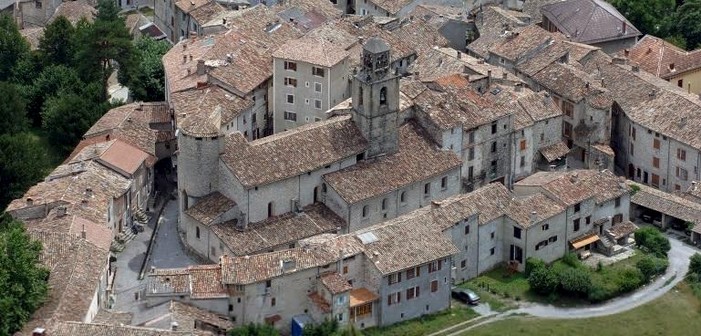We have already visited this village (see Azur Information April 2013) from a historical perspective with its fortifications and their evolution over the course of history. Today, we will wander through its streets, alleys, and squares to explore Annot.
.
You will find the Vaïre Bridge, a stone bridge with a refuge for pedestrians. It was in 1676, following a flood and torrential rains, that the old wooden bridge was swept away. The priory of Vérimonde, located on the right bank of the river, was then isolated from the village. In 1681, a stone bridge ended this isolation. The rue du Four was the old mule track between Entrevaux and Colmar, where two communal ovens can be found.
The Regain Museum is worth a visit. This former wine cellar, owned by the Rabiers family of Chateauredon, where a renowned wine was produced, tells the history of Annot and more; you have to go there to discover it. On Notre Dame square, you will find the arcade house of the Rabiers of Chateauredon, dating from the 17th century. In the 14th century, this square was a place for festivals and celebrations. In the 12th century, Saint Jean Street was the most important in the fortified town.
Church square was also the community square, where the communal house (equivalent to the town hall) was located. Each Easter, the community council was elected there. Rue Capone must have had its ‘red lanterns’ at one time, as it was indeed where women would entertain men!
Rue des Valasses or Vallon was used for draining the waters of the Béite, a tributary of the Vaïre. Chemin d’Argenton would have been the old Roman road. In 1742, Annot had its own college, which was rare for that time. The Saint Vincent de Paul College was renowned and known all the way to Aix en Provence. Although the fountain square dates from the 14th century, it acquired its fountain, the first in Annot, in the 16th century.
In the Middle Ages and up to the Revolution, towns and villages lived somewhat self-sufficiently, and the slaughtering of animals and butchery were therefore the responsibility of each commune. Rue du Mazèu was occupied by this guild. It was here that painter Jean André was born in 1612 and died in 1699. Anecdotally, as this street is always in the shade, it was nicknamed, especially in winter, the ‘bump road.’ Rue des Moulins, whose last one operated until 1935, is very old.
The first mills date back to the 15th century. Until the mid-19th century, Annot had significant walnut production. Then the walnut trees were uprooted and their wood sold to make rifle stocks for Prussia. These rifles were used against France in 1870. Chemin de la Lumière is next to the drapery mill. Their histories are intertwined.
At the end of the 19th century, in 1893, Mr. Roux automated his mill using the hydraulic power of the Tourtouille canal. This also marked the arrival of electricity in Annot. In 1388, Annot obtained the privilege of a duty-free market. The market square became the venue for fairs.
The neighboring site, or Place du Germe, was used for penning livestock. We must not forget the house of François Barra, who was to Annot a bit like its own Cheval mailman. Although he did not build a palace, he decorated the façade of his house in a very original way. The Coulet district was the area with stables, and since being redeveloped in 1983, it serves as an amphitheater for summer shows.
It’s up to you to get lost and discover Annot; every corner deserves your attention. It is not a village like any other.
Thierry Jan


